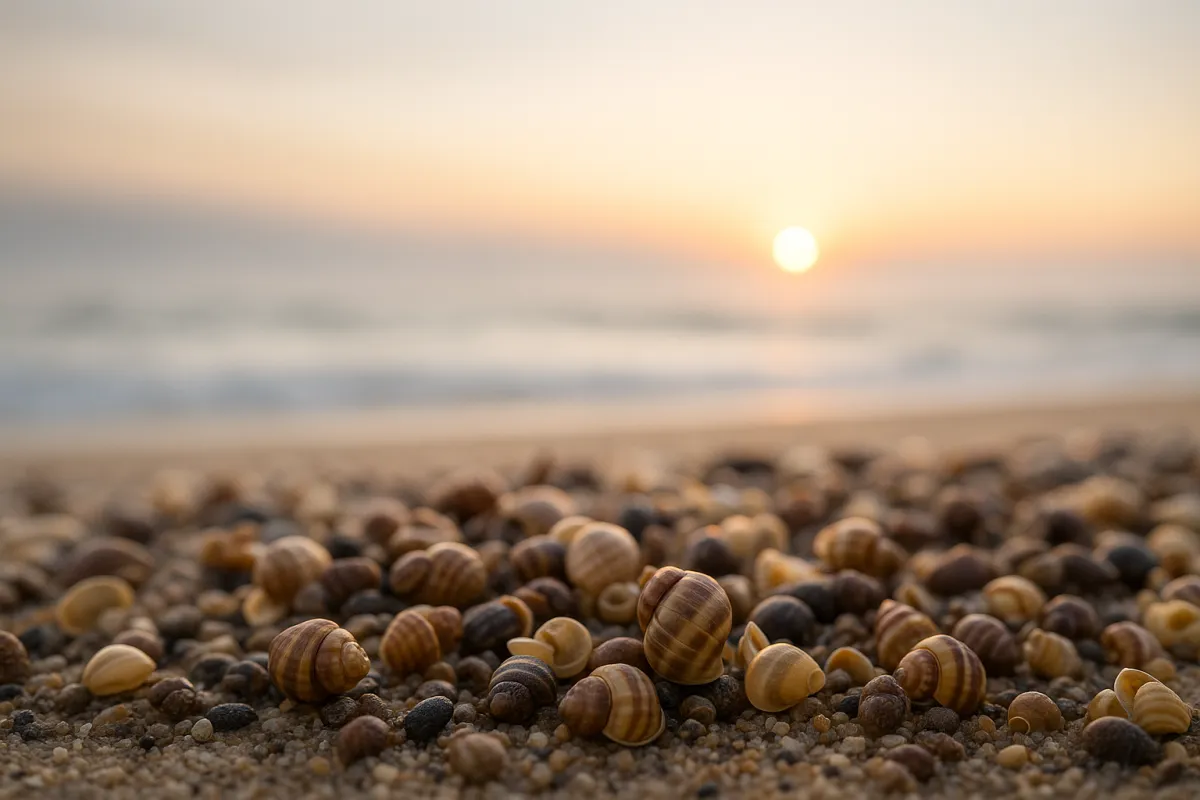
The Science of Sand
Grains of a Nation
Walk the edge of the United States, and the shore changes beneath your feet. More than 12,000 miles of coastline hold sands born of granite, coral, volcano, and glacier. Each grain is a record, shaped by time, weather, and tide—a library written not in ink, but in minerals and shells.
New England: Granite and Ice
On the rocky Atlantic edge of Maine and Massachusetts, the sand is coarse, angular, and bright with quartz and feldspar. These grains were ground from ancient granite and carried by Ice Age glaciers. Along Cape Cod, fine quartz mingles with the heavier stones, and shell fragments crunch underfoot—a reminder of the marine life thriving in the cold Atlantic.
The Mid-Atlantic: River-Borne Quartz
Further south, the sands of New York, New Jersey, and Delaware gleam pale under the sun. They are almost pure quartz, carried by rivers like the Hudson and Delaware from the Appalachian Mountains. On some beaches, black flecks of magnetite or garnet catch the eye—small traces of deeper earth.
The Southeast: Coral and Carbonate
The Carolinas, Georgia, and Florida show a shift. Here, quartz mixes with calcium carbonate from the shells of marine creatures. Florida’s Gulf Coast is famed for its sugar-white beaches, where fine quartz grains from the Appalachians were carried over millennia, sifted by waves into a surface as soft as sifted flour.
The Gulf Coast: Sediment and Sparkle
From Florida to Texas, sands tell the story of the Mississippi. In Louisiana, the grains are mixed with silt and clay, a product of the river’s vast sediment plume. On other Gulf beaches, heavy minerals like ilmenite and garnet catch the light, adding a subtle shimmer to the shoreline.
The Pacific Northwest: Basalt and Storm
The beaches of Washington and Oregon are shadowed by the legacy of volcanoes. Here, waves grind basalt into dark gray and black sands. Magnetite, hornblende, and other volcanic minerals give the coast a brooding color. Driftwood and rounded stones scatter across Cannon Beach, making the shore as rugged as the cliffs above.
California: A Coast in Contrast
Northern California sands are dark, coarse, and volcanic, while the south glows with golden quartz. Malibu, Santa Monica, and San Diego shimmer with grains weathered from the Sierra Nevada, carried westward by rivers, sorted by endless surf into ribbons of gold.
Alaska: Ice and Fire
Along Alaska’s immense and wild coastline, glaciers grind mountains to powder, while volcanoes spill rock into the sea. The sands near Anchorage are dark with basalt and andesite, their grains large, sharp, and freshly broken—a sign that they have not traveled far. Each step here is across the meeting point of fire and ice.
A Coastline Written in Sand
Every shore in the United States is both present and ancient. Each step on sand presses into stories of mountains eroded, volcanoes shattered, reefs built and broken, glaciers retreating. To walk the coast is to trace the movements of earth itself—quiet histories shifting beneath our feet.